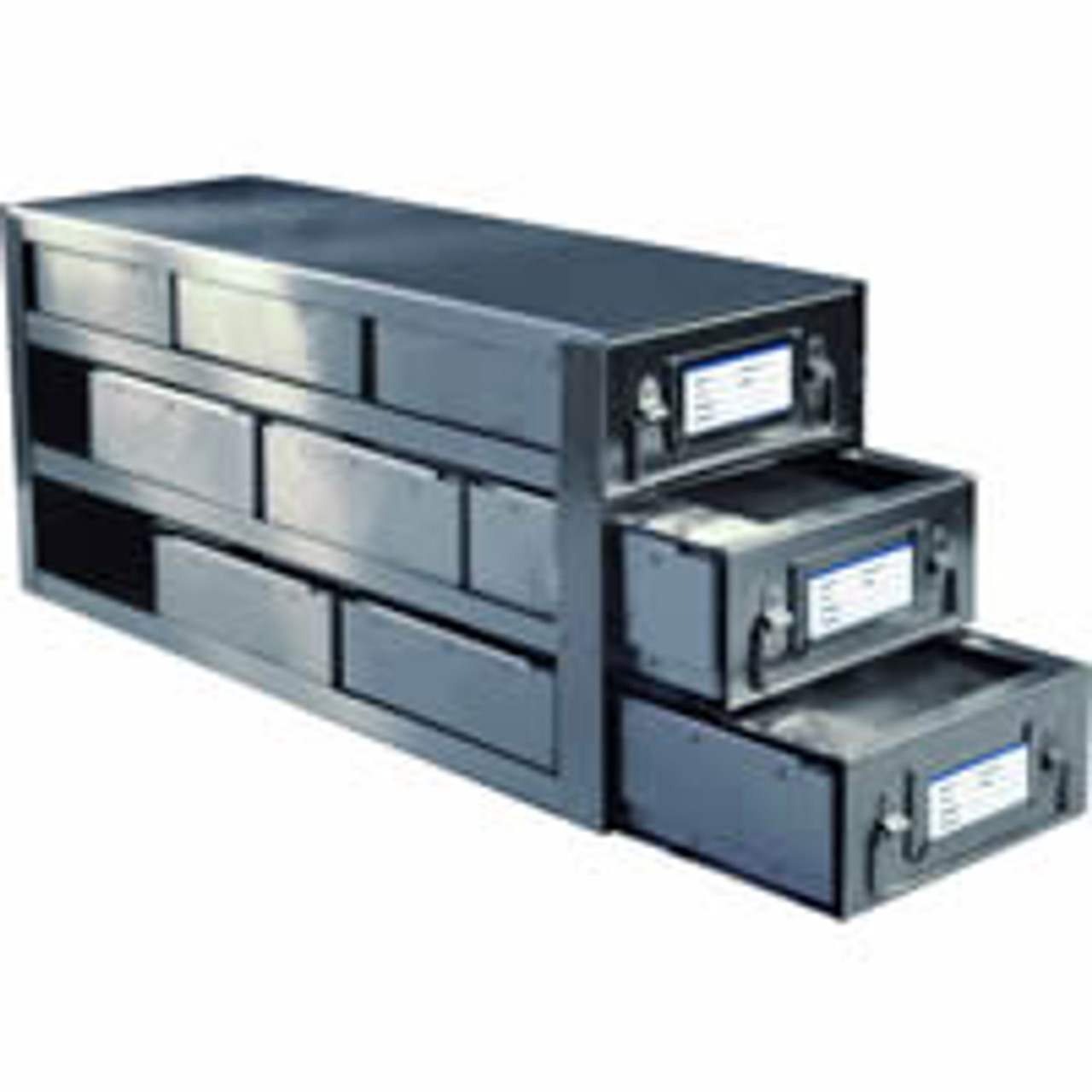Is it an understatement to say your minus-eighty freezer contains the culmination of your life’s work? Probably no less than $100,000 in samples and experiments are stored in the average twenty-five cubic foot laboratory ultra-low freezer; and the typical lab owns two or more such freezers and likely a liquid nitrogen tank or two as well.
Given the importance of their contents, freezers should only be opened with a clear purpose, and kept open for the barest minimum possible.
Having a well-organized freezer isn’t an aesthetic decision, it is critical to the entire laboratory endeavor! Making it easy to identify and quickly retrieve your work increases longevity of both your sample and the freezer compressor.
Because freezer racks don’t present themselves as a complex item, most people tend to make poor and uninformed decisions. And, because there is no secondary market for unwanted freezer racks, if you don’t get it right the first time, your lab will quickly pile up with these space-hogging, useless pieces of metal.
With this in mind, we wanted to share a quick list of some of the most common mistakes we’ve seen laboratories make when purchasing freezer racks.
You can check out a fairly good sample of what we've got when you visit our special freezer rack section.
- Failure to match racks with the freezer boxes that will go in them:
For example: If you store your samples in boxes that hold 100 micro-tubes or cryo-vials, there is a big difference between cardboard freezer boxes and plastic boxes – especially those with hinged lids. The plastic boxes just do not fit correctly. While the height remains the same, at two inches, the width and depth are almost an inch larger and thus, a special rack is needed.

- Failure to consider all the available options:
Most people tend to associate a freezer rack with the ubiquitous two-inch freezer box, and are unaware there are over one-thousand different types of racks to accommodate nearly every type of container.
Working with microscope slides? There are racks for your plastic storage boxes.
How about 250ml centrifuge bottles? Elisa plates? Blood draw tubes?
Yes, yes and yes.
There are even mixed-use freezer racks that allow you to store two or more different types of containers at once.
It really pays to consult with a freezer-rack specialist before resolving to cram the freezer full of your oddly shaped boxes and tubes.

- Failure to choose secure options:
This mistake might be made if purchasing freezer racks “on the cheap” and opting for an eco-rack that does not have enclosed compartments, just small divots that protrude from the rack wall to (theoretically) support the boxes if they are inserted exactly right and not jostled too much when removed from the freezer.

Or, consider the lab that should have added a locking mechanism to their racks and are now left wondering where their valuable reagents or, worse, vital samples have wandered off to.

- Failure to think strategically for the long-term:
The absolute best time to outfit your freezer is when buying a new one. Many manufacturers offer bundled packages that include racks and boxes too. While you will likely be limited to accepting whatever racks they choose to provide, you will save hundreds, if not thousands of dollars. If they don’t bring it up, you should absolutely make it part of the negotiations. Don’t blow this golden opportunity.
The worst way to purchase freezer racks is without a plan, buying them one at a time. You have no negotiating power and will wind up paying 10-20% or more, had you chosen to buy them, even a shelf-load at once.
Have more questions or afraid you might be making a mistake? Give us a call and let us walk you through the process of setting up your laboratory freezers for success!


